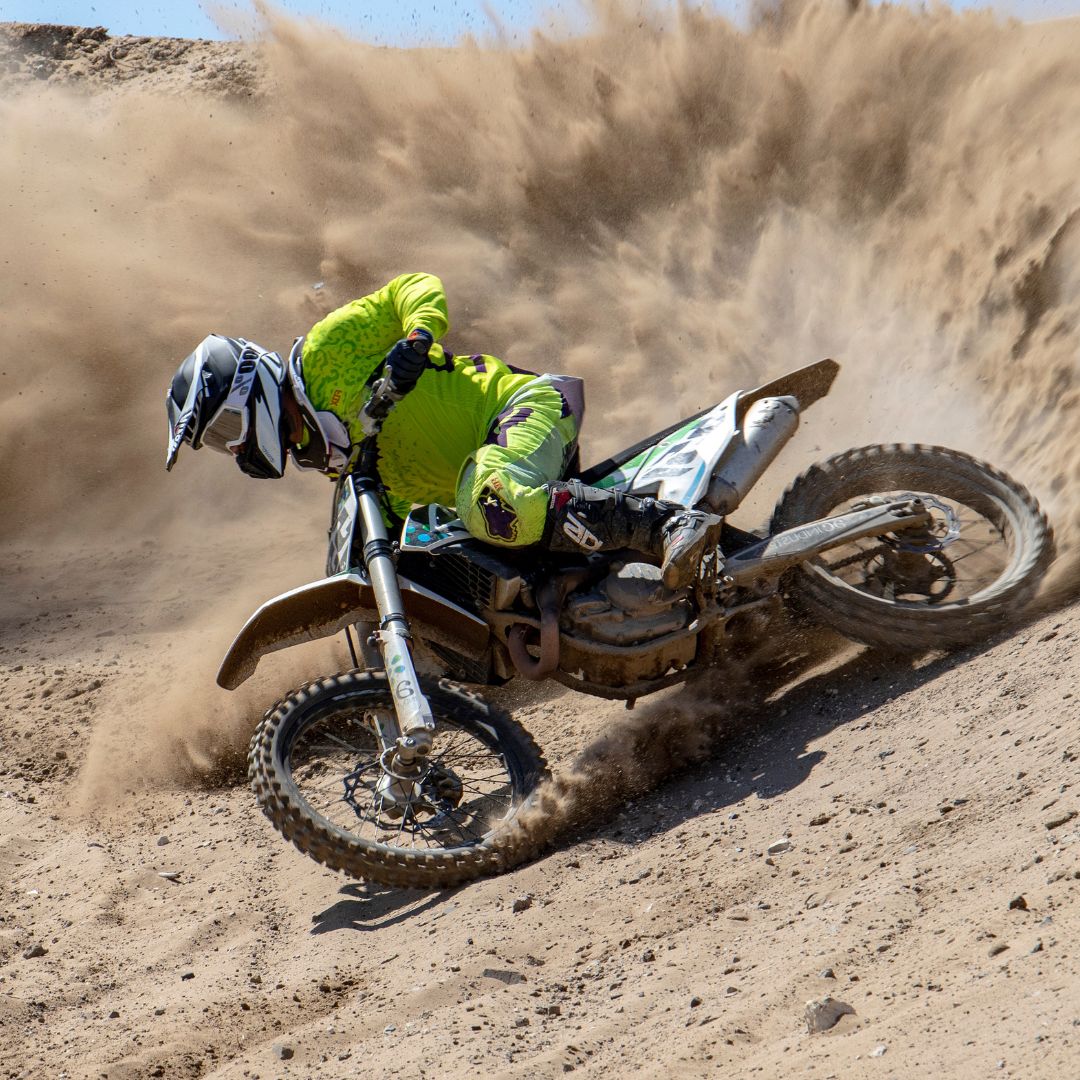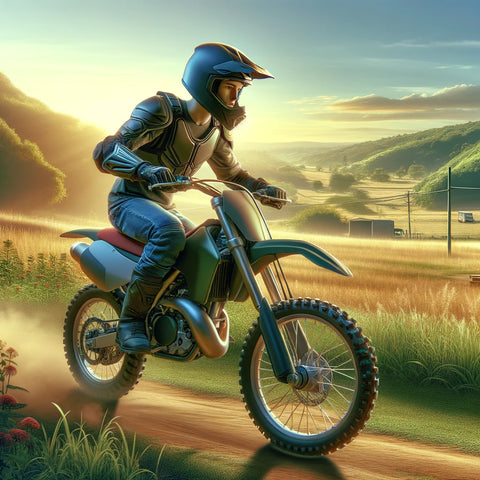
Updated: 9.5.25
Off-road dirt biking is a thrilling adventure for kids, boosting fitness, balance, and coordination. This guide equips parents and young riders with essential skills for safe, enjoyable rides.
1. Why Off-Road Biking Matters
Dirt biking opens up outdoor adventures while teaching discipline, resilience, and environmental respect. Kids gain skills for safe, confident riding on any terrain.
2. Gear and Preparation
Safety Gear
Helmets, gloves, goggles, and durable clothing meeting safety standards are essential for protection and comfort.
Bike Selection and Fitting
Choose a bike sized for your child’s height and reach. A proper fit enhances control and safety, so consult experts at a bike shop for adjustments.
Maintenance Basics
Teach kids to check tire pressure, brakes, and chain lubrication. Regular maintenance prevents breakdowns and builds responsibility.
3. Riding Techniques and Skills
Body Positioning
Maintain a low center of gravity and shift weight during climbs, descents, and turns for balance and control.
Throttle and Braking
Practice smooth throttle control and effective use of front and rear brakes on flat terrain to manage speed safely.
Turning Techniques
Lean into turns and look ahead to guide direction, practicing drills to build agility and confidence.
Overcoming Obstacles
Start with small bumps, progressing to rocks and roots. Teach safe approaches to navigate obstacles confidently.
4. Environmental Awareness and Etiquette
Terrain Familiarity
Expose kids to varied terrains like sand or mud, teaching techniques for each to broaden skills.
Trail Etiquette and Conservation
Stay on marked paths, respect wildlife, and follow right-of-way rules to ensure a positive trail experience.
5. Practice and Progression
Choosing Practice Locations
Select safe areas like open fields or designated tracks that match your child’s skill level for effective practice.
Supervision and Encouragement
Provide guidance and support during practice, offering feedback to build confidence and skills.
Setting Goals
Set achievable goals and celebrate milestones to motivate progress and maintain enthusiasm.
Emergency Preparedness
Teach basic first aid and carry a kit. Establish an emergency plan, including contacts and procedures.
Conclusion
Off-road dirt biking is a rewarding adventure for kids, fostering skills, responsibility, and a love for the outdoors. With proper gear, techniques, and etiquette, young riders can thrive safely.
Key Takeaways
- Safety First: Prioritize quality gear and proper bike fit; maintain regularly.
- Skill Building: Master positioning, throttle, braking, and obstacle navigation.
- Respect Nature: Teach terrain-specific skills and trail etiquette.
- Support Growth: Practice consistently, supervise, and prepare for emergencies.
For more, explore Dirt School for coaching, This Daddy Does for tips, Vital MX for community advice, or Spokester for competitive insights.
Frequently Asked Questions
What age is appropriate for kids to start off-road dirt biking?
Kids as young as 6 can start with supervision, using bikes suited to their size and maturity.
How do I know if my child is ready for tougher trails?
Look for confidence on easy trails, mastery of throttle, braking, and obstacle skills, and strong safety awareness.
What are signs of a well-fitting dirt bike?
The bike allows feet to touch the ground, easy control access, and comfortable handling without strain.
How often should kids practice to improve?
Weekly or bi-weekly sessions build muscle memory and skills, balancing practice with rest.
What safety gear is essential for kids’ dirt biking?
Helmets, gloves, goggles, and durable clothing meeting safety standards are critical for protection.
Get in Touch 🚀
Loved our article on “Basic Off-road Dirt Bike Riding Skills For Your Kid”? Got the itch to dive into more wheely-awesome info?
Whether you're a parent or a grandparent, we're here for all your kids ride-on toy questions! 🚗💨
Feeling click-happy?
Jump straight into our wonderland at RiiRoo.com.
Or, if you're more the chatty type, give our Live Chat a whirl and let's talk toys!








Share:
The Physical Perks Of Off-roading For Your Kids
Understanding the Different Types of Go-Kart Racing for Kids